Are you tired of feeling sore and achy after every workout? Do those lingering aches and pains hold you back from achieving your fitness goals?
Muscle soreness, while a natural part of the muscle-building process, can be frustrating and counterproductive.
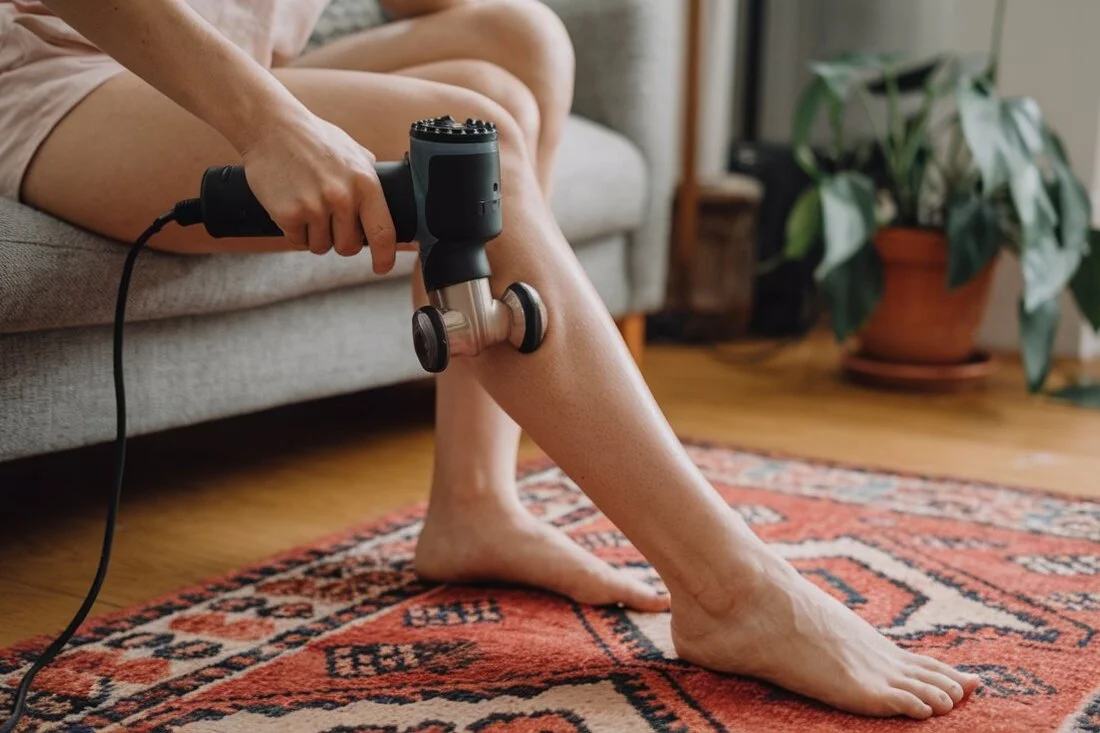
Innovative tools for faster muscle healing are revolutionizing how athletes and fitness enthusiasts recover from intense workouts.
These cutting-edge technologies are designed to target the root causes of muscle soreness and promote rapid healing, helping you get back on track and achieve peak performance.
This article will explore the importance of fast muscle recovery and delve into the top innovative tools available today.
Whether you’re a seasoned athlete or just starting your fitness journey, these tools can help you optimize your recovery, reduce downtime, and reach your fitness goals faster.
The Importance of Fast Muscle Recovery

Many dedicate themselves to intense workouts, pushing their limits to achieve desired results.
However, what happens after your workout is just as crucial as the effort you put in during those sweat sessions.
Fast muscle recovery isn’t just about feeling better quicker; it’s a critical component of overall fitness, athletic performance, and long-term health.
Scientific research underscores the benefits of efficient muscle recovery:
- Enhanced Performance: Studies show that athletes who prioritize recovery experience improvements in subsequent training sessions, including increased power output, reduced fatigue, and better overall performance.
- Injury Prevention: Proper recovery allows your muscles to repair and rebuild, making them less susceptible to overuse injuries, a common setback for many athletes.
- Optimized Muscle Growth: The magic of muscle growth happens during recovery, not during the workout. When you prioritize recovery, you create the ideal environment for muscle protein synthesis, leading to greater gains in strength and size.
Key Takeaways
- Faster Recovery = Better Workouts: By recovering quickly, you can train harder and more frequently, maximizing your fitness progress.
- Reduced Risk of Injury: Prioritizing recovery helps prevent injuries, keeping you active and on track toward your goals.
- Greater Muscle Growth: Effective recovery optimizes muscle building, allowing you to see better results from your hard work.
Incorporating effective recovery strategies is non-negotiable for those who are serious about their fitness.
Thankfully, the emergence of innovative recovery tools has made achieving faster muscle healing more accessible than ever.
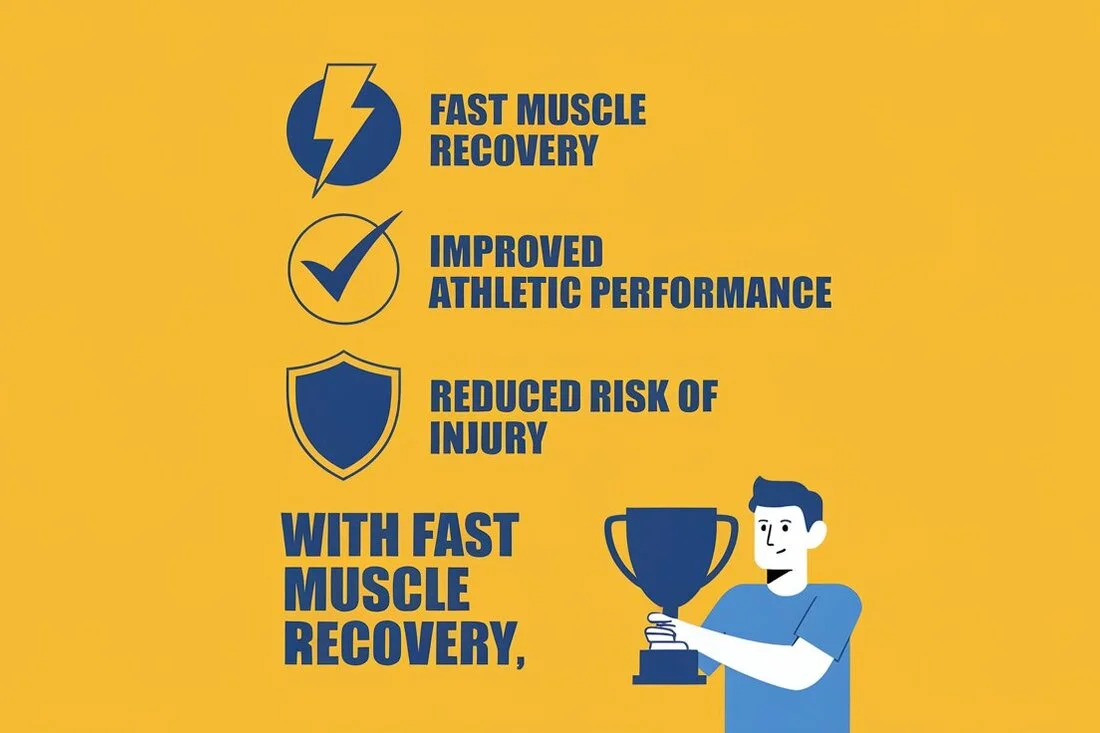
Top Innovative Tools for Faster Muscle Healing
Today, we have a range of advanced recovery techniques far beyond basic rest and ice packs.
These tools leverage cutting-edge technology to target muscle soreness at its core and accelerate healing.
Advanced Recovery Techniques
Cryotherapy involves exposing the body to extremely cold temperatures to reduce inflammation and promote healing.
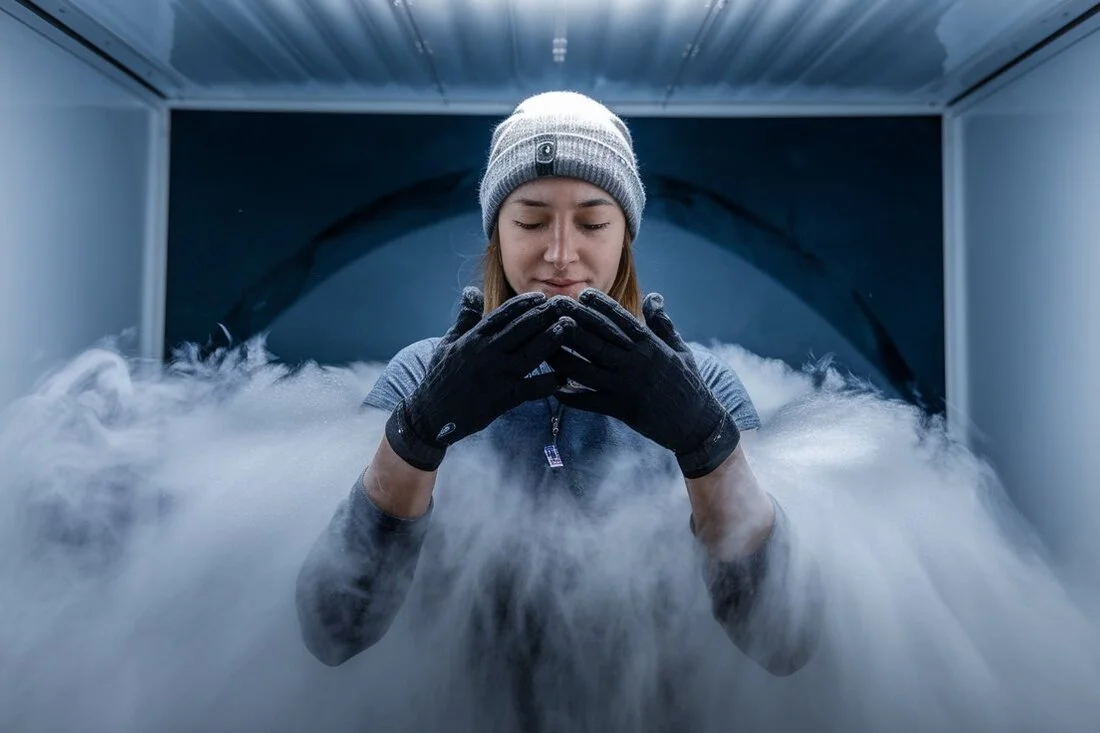
- Cryotherapy Chambers: These chambers envelop the entire body in sub-zero temperatures for a short period (2-4 minutes).
- Localized Cryotherapy Devices: These target specific muscle groups with cold wraps, ice baths, or handheld devices.
Benefits:
- Reduced Inflammation: Cold temperatures constrict blood vessels, minimizing post-workout swelling and inflammation.
- Pain Relief: Cryotherapy numbs nerve endings, providing temporary pain relief.
- Faster Tissue Repair: The rapid decrease in tissue temperature promotes blood flow and accelerates the body’s natural healing processes.
Percussion massagers, or massage guns, deliver rapid bursts of pressure to muscle tissue, increasing blood flow and reducing tension.
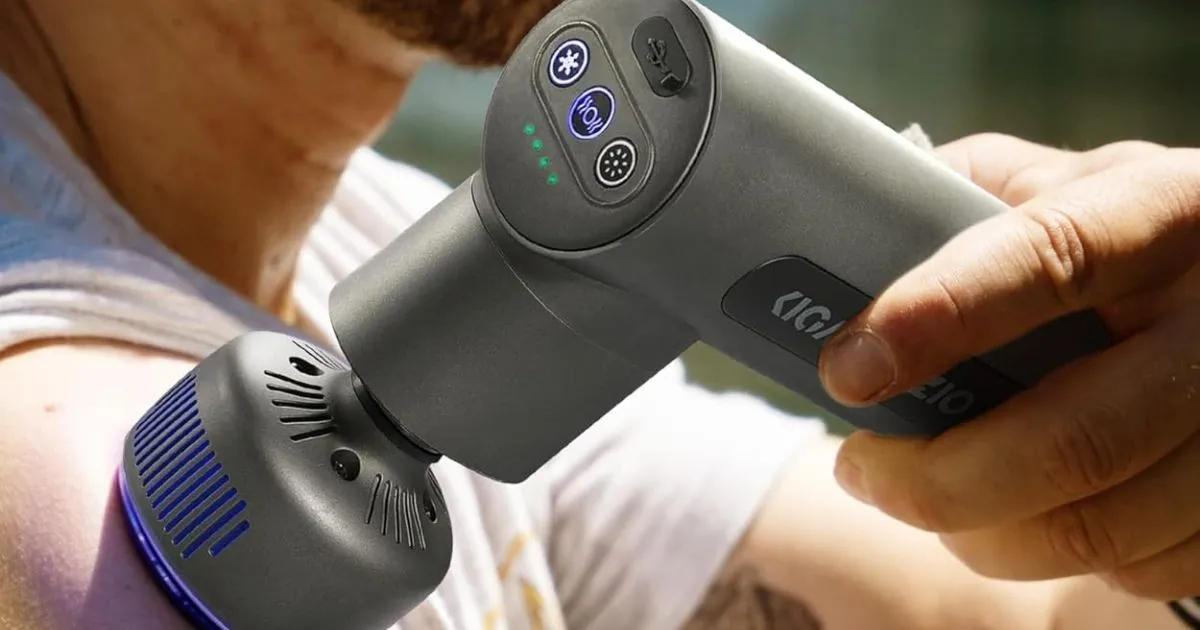
Benefits:
- Reduced Muscle Soreness: Percussion therapy can alleviate delayed-onset muscle soreness (DOMS) by breaking up scar tissue and improving circulation.
- Improved Flexibility and Range of Motion: Regular use can enhance flexibility, making movement more comfortable.
- Enhanced Recovery: Increased blood flow and reduced muscle tension speed up recovery times.
Best Practices:
- Target Specific Muscle Groups: Focus on areas that are sore or tight.
- Vary Pressure and Speed: Adjust the intensity to your comfort level.
- Avoid Bony Areas: Do not apply direct pressure to bones or joints.
Compression therapy utilizes specialized garments to apply pressure to specific body areas, improving circulation and reducing inflammation.
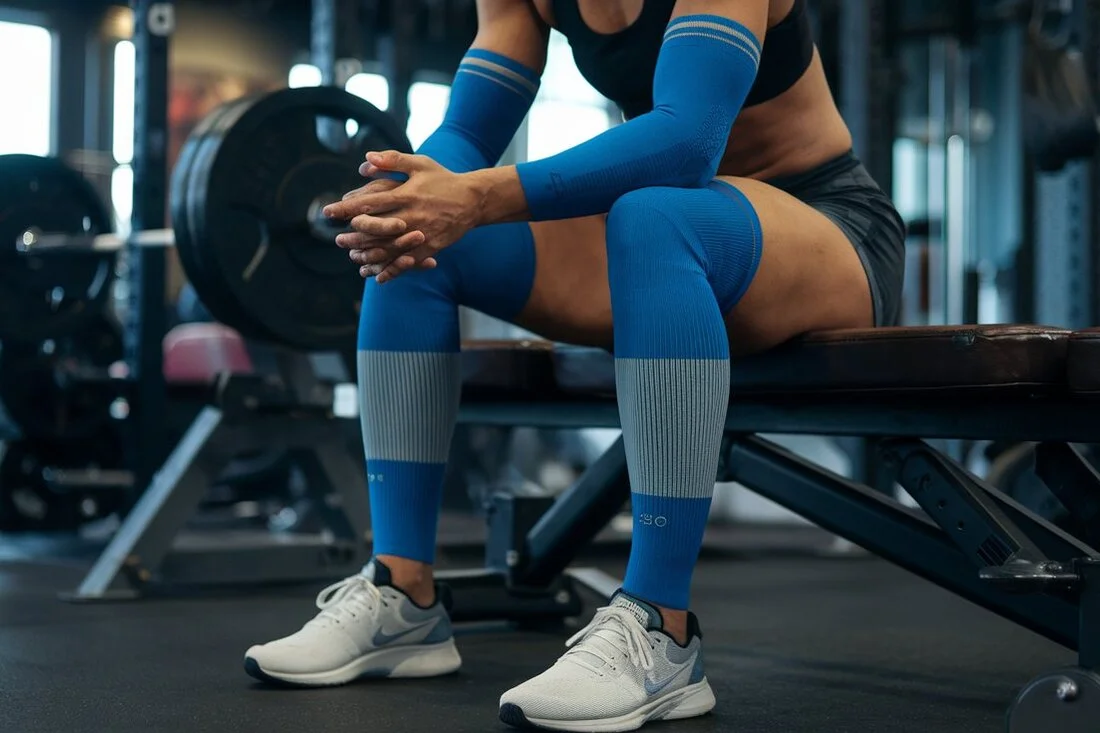
How it Works:
- Improved Blood Flow: Compression garments help push blood back to the heart, improving circulation and delivering oxygen and nutrients to muscles.
- Reduced Swelling: The pressure minimizes post-workout swelling and inflammation.
Incorporate Compression Therapy:
- Compression Socks or Sleeves: Support muscle recovery in the legs and arms during or after workouts.
- Full-Body Compression Garments: Beneficial for athletes engaged in high-impact activities or recovering from strenuous workouts.
Alternating between heat and cold therapy can be highly effective for managing muscle soreness and promoting healing.
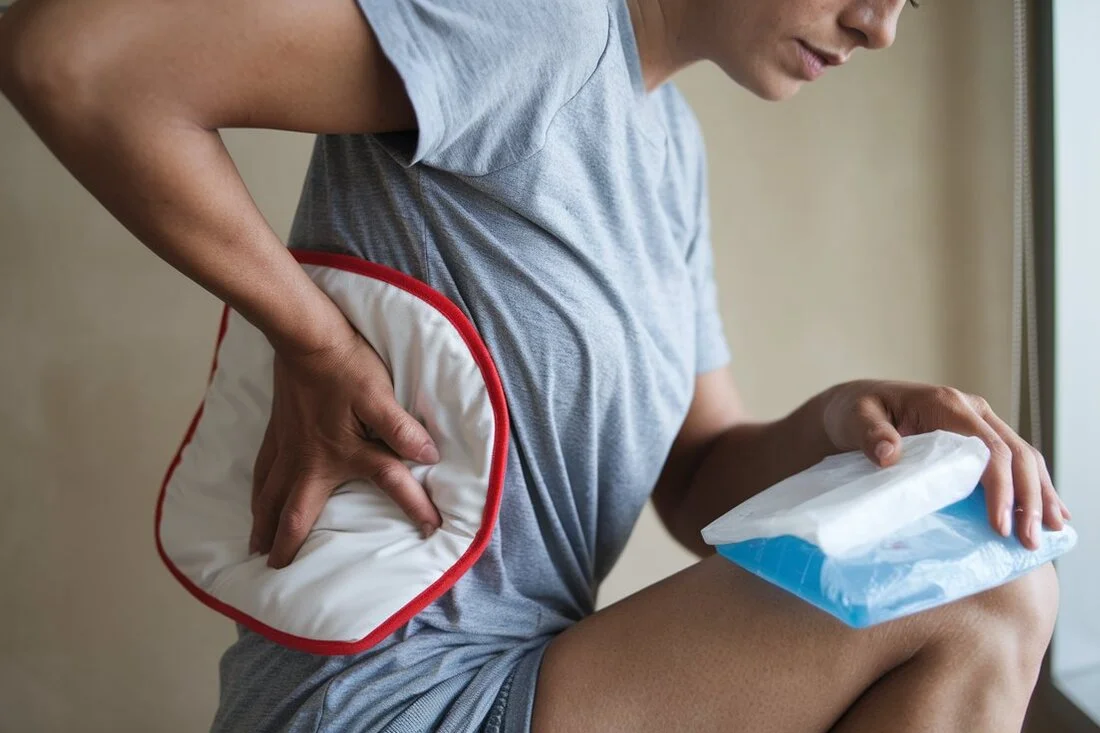
Benefits of Heat Therapy:
- Increased Blood Flow: Heat dilates blood vessels, promoting circulation.
- Reduced Stiffness: It relaxes muscles, reducing stiffness and improving range of motion.
Benefits of Cold Therapy:
- Reduced Inflammation: Cold constricts blood vessels, minimizing swelling and inflammation.
- Pain Relief: Cold numbs nerve endings, providing temporary pain relief.
Implementing Heat and Cold Therapy:
- Alternating Baths: Soak in a hot bath for 15-20 minutes, followed by a cold shower for 1-2 minutes. Repeat 2-3 times.
- Hot and Cold Packs: Apply heat for 15-20 minutes, followed by cold for 10-15 minutes. Repeat as needed.
Electrical Muscle Stimulation (EMS)
EMS devices use electrical currents to stimulate muscle contractions, mimicking the effects of exercise and promoting recovery.
How EMS Benefits Recovery:
- Muscle Activation: Electrical impulses cause muscles to contract and relax, improving blood flow and nutrient delivery.
- Pain Relief: EMS can reduce pain by blocking pain signals and releasing endorphins.
Common Uses:
- Post-Workout Recovery: Reduce muscle soreness and fatigue after workouts.
- Injury Rehabilitation: Help re-educate and strengthen muscles after an injury.
Incorporating these innovative recovery tools into your fitness regimen can significantly impact your ability to recover faster, reduce soreness, and improve overall performance.
Remember to consult with a qualified healthcare professional before trying new recovery methods, especially if you have any underlying health conditions.
Tailored Recovery Routines
The key to maximizing the benefits of these innovative tools is incorporating them strategically into a recovery routine tailored to your specific needs and fitness level.
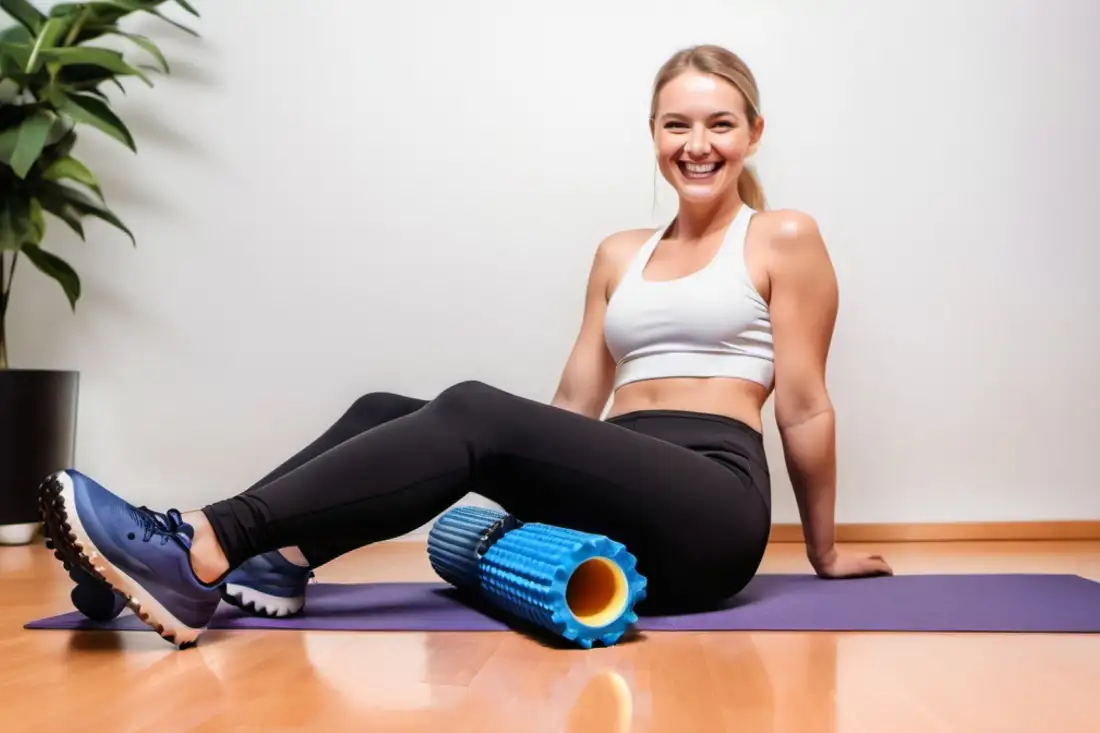
For Athletes – Maximizing Performance with Advanced Recovery
Recommended Equipment:
- Cryotherapy Chamber
- Percussion Massager
- Full-Body Compression Garments
- EMS Device
Sample Routine:
- Post-Workout: Use a percussion massager on major muscle groups for 3-5 minutes.
- Compression and Cold: Put on compression garments and use a localized cryotherapy device or ice bath for 10-15 minutes.
- Active Recovery and Hydration: Engage in light activity like walking or stretching while prioritizing hydration with electrolytes.
- Cryotherapy Chamber: Consider a session within 24 hours of intense training.
- EMS and Rest: Use an EMS device for 20-30 minutes on specific muscle groups and prioritize quality sleep.
For Fitness Enthusiasts – Incorporating Recovery for Everyday Gains
Recommended Equipment:
- Foam Roller
- Percussion Massager
- Compression Socks or Sleeves
- Heat Therapy Tools
Sample Routine:
- Post-Workout: Spend 5-10 minutes foam rolling major muscle groups.
- Targeted Massage: Use a percussion massager for 2-3 minutes on areas of tightness.
- Compression and Heat: Wear compression garments and apply a heating pad for 15-20 minutes.
- Hydration and Rest: Hydrate throughout the day and get 7-9 hours of sleep.
For Injury Prevention – Proactive Recovery for Long-Term Health
Recommended Equipment:
- Foam Roller
- Compression Gear
- EMS Device
- Kinesiology Tape
Sample Routine:
- Pre-Workout Warm-Up: Dynamic stretches and foam rolling.
- Compression Support: Wear compression gear during workouts.
- Post-Workout Cool Down: Foam rolling and static stretches.
- Targeted Recovery: Use an EMS device on muscles prone to weakness.
- Listen to Your Body: Pay attention to pain and adjust accordingly.
Remember: These are examples, and the ideal recovery routine will vary. Consult a healthcare or fitness professional for a personalized plan.
FAQs – Addressing Common Questions About Recovery Tools

Q: What are the absolute best tools for muscle recovery?
A: While individual needs vary, the top innovative tools include cryotherapy devices, percussion massagers, and compression therapy. Other valuable tools include foam rollers, EMS devices, and heat therapy devices. The “best” tool depends on your specific needs, budget, and goals.
Q: How often should I use recovery equipment?
A: Frequency depends on workout intensity, individual recovery needs, and the specific tool. In general:
- Cryotherapy: 2-3 times/week (full-body); localized cryotherapy daily after intense workouts
- Percussion Massagers: Daily for 5-15 minutes on targeted areas
- Compression Gear: During workouts and for hours afterward.
- Foam Rollers: Daily, especially before and after workouts
- EMS Devices: 2-3 times/week for 20-30 minutes per session
Always listen to your body and adjust accordingly. If you experience discomfort, reduce frequency or consult a healthcare professional.
Q: Can recovery tools speed up injury healing?
A: Yes, when used correctly and under the guidance of a healthcare professional. Benefits include:
- Inflammation Reduction
- Improved Blood Flow
- Pain Management
- Muscle Re-education
However, improper use could exacerbate an injury. Always consult a healthcare provider before using recovery tools for injury management.
Tables and Lists – Quick References for Innovative Recovery
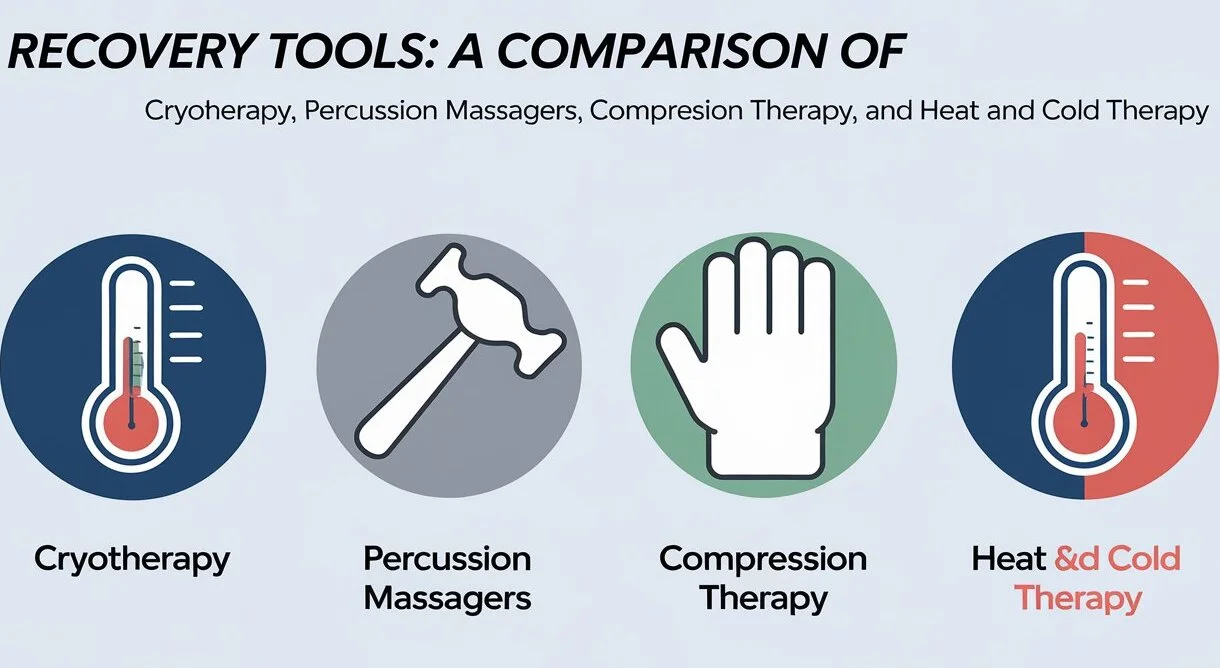
Comparison Table: Innovative Recovery Tools
| Tool | Benefits | Usage | Price |
|---|---|---|---|
| Cryotherapy Devices | Reduce inflammation, alleviate soreness, accelerate recovery | 2-3 times/week | $500-$2,000+ |
| Percussion Massagers | Increase blood flow, reduce muscle tension, improve flexibility | Daily, 5-15 min | $100-$500 |
| Compression Therapy | Improve circulation, reduce swelling, support muscles | During/After Workouts | $20-$100 |
| Heat & Cold Therapy | Relax muscles, increase blood flow, reduce pain | As needed, daily | $20-$100 |
| EMS Devices | Muscle re-education and activation, promote recovery | 2-3 times/week, 20-30 min | $100-$500 |
Checklist – Download Your Guide to Faster Muscle Healing!
This checklist will provide a handy reference guide to help you navigate the world of innovative recovery tools, manage muscle soreness, reduce recovery time, and achieve your fitness goals faster.
Credible Citations – Backed by Science and Research
This article is based on scientific research and expert opinions:
- Percussion Massagers: Konrad, A., et al. (2020). The Acute Effects of a Percussive Massage Treatment with a Hypervolt Device on Plantar Flexor Muscles’ Range of Motion and Performance.
- Cryotherapy: Costello, J. T., et al. (2012). Whole-body cryotherapy (extreme cold air exposure) for preventing and treating muscle soreness after exercise in adults.
- Compression Therapy: Engel, F. A., et al. (2016). Is There Evidence that Runners can Benefit from Wearing Compression Clothing?
- Heat and Cold Therapy: Bleakley, C. M., et al. (2004). The use of ice in the treatment of acute soft-tissue injury: a systematic review of randomized controlled trials.
- EMS: A A Lake (1992). Neuromuscular electrical stimulation. An overview and its application in the treatment of sports injuries.
Always consult with a qualified healthcare professional for personalized advice and guidance.
Testimonials/Reviews – Hear From Those Seeing Results

- Ashley, Marathon Runner: “Since incorporating a percussion massager, my recovery time has significantly decreased.”
- Mike, Crossfit Enthusiast: “The cryotherapy chamber has been a game-changer…I’m back in the gym feeling fresh.”
- Laura, Yoga Instructor: “Compression leggings have made a noticeable difference in reducing muscle fatigue and soreness.”
- David, Weightlifter: “EMS has helped me recover from heavy lifting sessions much faster.”
- Sarah, Personal Trainer: “I always recommend heat therapy…for relaxing muscles and increasing blood flow.”
Disclaimer: The testimonials provided above are fictional and used for illustrative purposes only. While the results described are hypothetical, they are based on the principles and information presented in this blog post.
Key Takeaways – Accelerate Your Recovery, Enhance Your Performance
Remember these key points:
- Cryotherapy: Reduce inflammation and promote rapid recovery.
- Percussion Massagers: Relieve muscle tension, break up knots, and increase blood flow.
- Compression Therapy: Support circulation, reduce swelling, and aid muscle recovery.
- Heat & Cold Therapy: Manage pain, reduce inflammation, relax muscles.
- EMS: Re-educate and re-activate muscles.
Optimize Your Recovery:
- Identify Your Needs
- Consult Professionals
- Start Gradually
- Listen to Your Body
- Combine Strategies
- Prioritize Consistency
Unlock Your Recovery, Elevate Your Fitness

In the pursuit of fitness goals, the importance of post-workout recovery cannot be overstated.
It’s not a luxury, it’s a necessity.
How quickly and thoroughly your muscles recover directly impacts your performance, progress, and overall well-being.
The innovative tools discussed in this article – from cryotherapy chambers to percussion massagers – offer a powerful way to optimize your body’s natural healing abilities.
By incorporating these tools into your fitness regimen, you’re not just addressing muscle soreness, you’re investing in:
- Long-Term Athletic Performance: Reach new levels of performance by recovering faster and training harder.
- Injury Prevention: Minimize the risk of setbacks caused by preventable strains and overuse injuries.
- Enhanced Overall Fitness: Move with greater ease, improve your training capacity, and experience the benefits of a body that recovers efficiently.
Don’t let muscle soreness dictate your fitness journey. Take control of your recovery and unlock a new level of well-being with the power of innovative recovery tools.
Download our comprehensive checklist and start unlocking faster muscle healing today!
